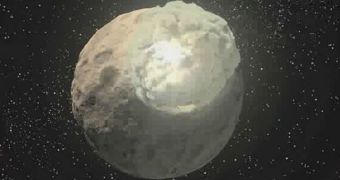Questions related to how the solar system appeared some 4.7 billion years ago have been around since the first people started using their brains for more than capturing their next meal. Science has only recently been able to provide some preliminary answers to this type of questions, although numerous ones still remain unanswered. Now, experts at the NASA Jet Propulsion Laboratory (JPL), in Pasadena, California, solve a small piece of the mystery, by proposing a theory on how the planets in the solar system today formed.
Astronomical observations have thus far revealed the fact that young stars, which have just formed, are generally surrounded by a ring of debris left from their own formation, called the protoplanetary disk. These structures are the precursors of large-scale planets, in spite of the fact that they are only made up of dust at first. According to a leading theory on how planets formed, grains of dust would orbit the newly formed star at high speeds, bumping and clogging with each other, until they formed larger grains of dust.
Through numerous cycle repeats, the grains would eventually reach the size of small rocks, and so on. After a while, the theory goes, some of these rocks would grow to asteroid sizes, and then beyond, to small planets. The problem with this line of reasoning is that space rocks larger than one meter (three feet) in diameter would have been significantly slowed down by gas in the protoplanetary disk, which would have caused them to spiral down into the Sun and get vaporized. According to the new theory, it may be that the small rocks “jumped” in size suddenly, from one meter to several kilometers in diameter.
The newly formed objects would have had enough drag to plow through the protoplanetary disk under these circumstances, overcoming the influence of the gas, whilst having their own orbits only slightly modified. The data used for this conclusion was drawn from astronomical observations, which show that asteroids less than one kilometer in diameter can be found in abundance, while the number of those over this limit is extremely limited. The JPL experts propose that the asteroids we see today are what was left behind after the original, much larger ones, broke apart.

 14 DAY TRIAL //
14 DAY TRIAL //